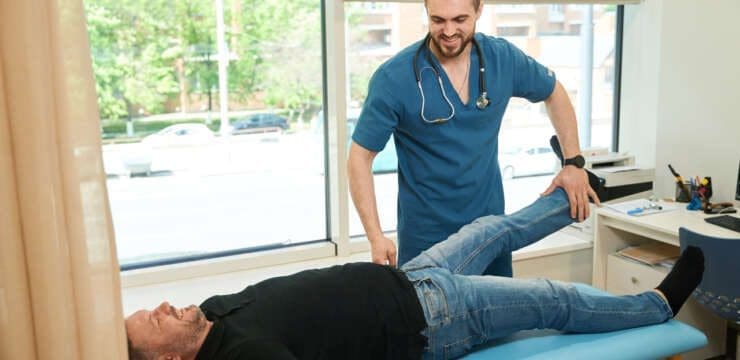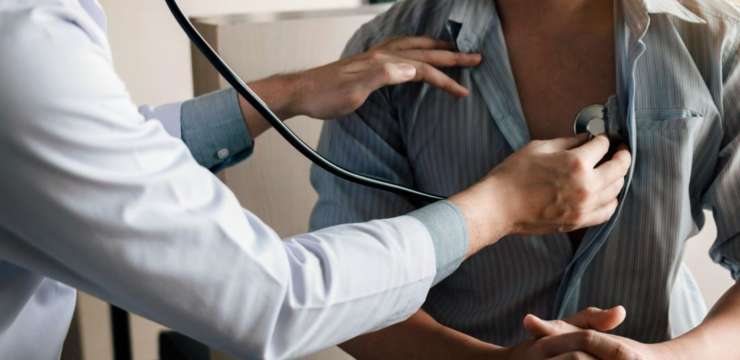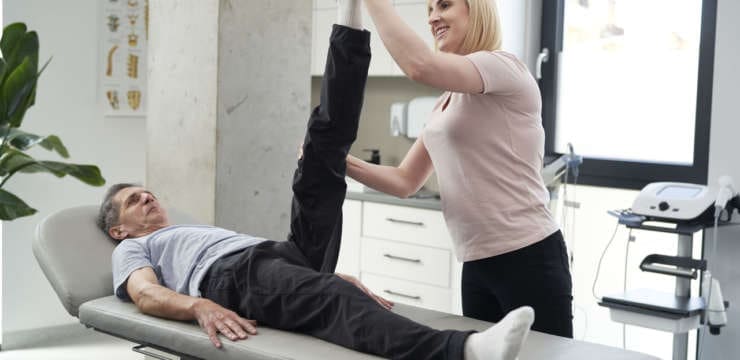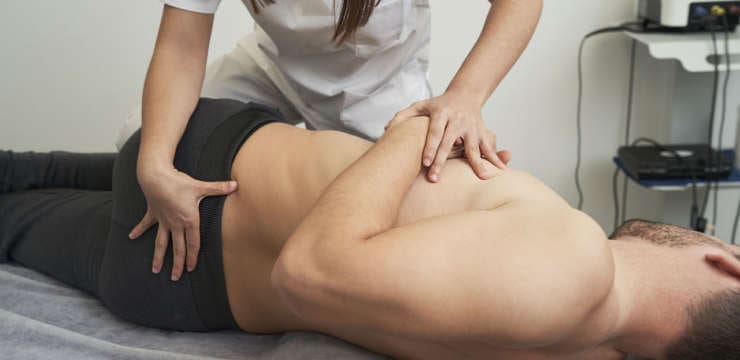“Individuals that have gone through a back injury may develop a synovial spinal cyst as a way to protect the spine that could cause pain…

Chiropractic Examination:
Health coaches guide individuals in being healthy and feeling their best. Part of being healthy is taking care of your body. Taking care of your body goes beyond diet, but physical practices as well. Chiropractic care is a great way to take care of your body to keep everything in line and order. An initial chiropractic examination for musculoskeletal disorders will typically have four parts: a consultation, case history, and physical examination. Laboratory analysis and X-ray examination may be performed. Our office provides additional Functional and Integrative Wellness Assessments in order to bring greater insight into a patients physiological presentations.
Consultation:
The patient will meet the chiropractor which will assess and question a brief synopsis of his or her lower back pain, such as:
Duration and frequency of symptoms
Description of the symptoms (e.g. burning, throbbing)
Areas of pain
What makes the pain feel better (e.g. sitting, stretching)
What makes the pain feel worse (e.g. standing, lifting).
Case history. The chiropractor identifies the area(s) of complaint and the nature of the back pain by asking questions and learning more about different areas of the patient’s history, including:
Family history
Dietary habits
Past history of other treatments (chiropractic, osteopathic, medical and other)
Occupational history
Psychosocial history
Other areas to probe, often based on responses to above questions.
Physical examination:
 We will utilize a variety of methods to determine the spinal segments that require chiropractic treatments, including but not limited to static and motion palpation techniques determining spinal segments that are hypo mobile (restricted in their movement) or fixated. Depending on the results of the above examination, a chiropractor may use additional diagnostic tests, such as:
X-ray to locate subluxations (the altered position of the vertebra)
A device that detects the temperature of the skin in the paraspinal region to identify spinal areas with a significant temperature variance that requires manipulation.
Laboratory Diagnostics:
 If needed we also use a variety of lab diagnostic protocols in order to determine complete clinical picture of the patient. Our health coach and office have teamed up with the top labs in the city in order to give our patients the optimal clinical picture and appropriate treatments.

“Individuals that have gone through a back injury may develop a synovial spinal cyst as a way to protect the spine that could cause pain…

“Individuals’ feet will heat up when walking or running; however, burning feet could be a symptom of medical conditions like athlete’s foot or a nerve…

Can musculoskeletal therapies treat individuals with upper crossed syndrome to relieve pain, improve posture, and strengthen the muscles in the neck, shoulders and chest? Upper…

How can healthcare professionals provide a positive and safe approach for gender minority healthcare for the LGBTQ+ community? Introduction In an ever-changing world, it can…

The gluteal muscles/glutes comprise the buttocks. They are a powerful muscle group that consists of three muscles. The gluteus maximus, gluteus medius, and gluteus minimus.…

The nervous system communicates with the entire body and reacts to internal and external changes using electrical and chemical impulses to send and receive messages.…

A big part of sports is avoiding and preventing injuries, as injury prevention is far better than rehabilitation and recovery. This is where prehabilitation comes…

Constipation is a leading cause of low back pain in America and can cause a chain reaction in the rest of the body. When the…

Nerve irritation occurs when the nerves exiting the spine become irritated and sensitized. Also known as nerve gliding restriction, it is a condition whereby a…

Bruxism is an abnormal jaw clenching or grinding of the teeth, either while awake or during sleep. This can cause neck and shoulder tension caused…

It is a common scenario, whether sitting or standing, when we need to bend down or forward, and suddenly there is a sharp sting on…

The hip joint is a ball-and-socket joint composed of the femur head and a socket, which is part of the pelvis. The labrum is a…

Non-radiographic axial spondyloarthritis or nr-axSpA and non-radiographic ankylosing spondylitis/AS are related. However, non-radiographic axial spondyloarthritis can present AS symptoms with active inflammation of the spine…

Back discomfort sensations and symptoms could indicate pulled-back muscles. Unless you’ve experienced the condition before, determining the cause can be difficult. A pulled-back muscle can…

Subluxation is when a joint shifts out of alignment, which can happen to any joint in the body. Spinal subluxation indicates a misalignment of one…

Diagnosing ankylosing spondylitis usually involves multiple tests. When doctors order blood tests to diagnose ankylosing spondylitis, an individual is experiencing worsening symptoms in their back…

The Adams forward bend test is a simple screening method that can help with scoliosis diagnosis and help in developing a treatment plan. The exam…